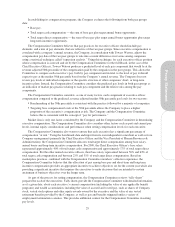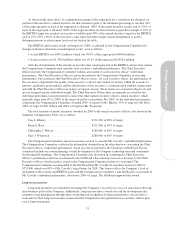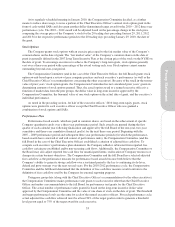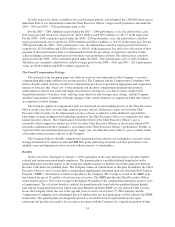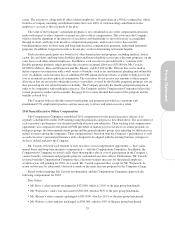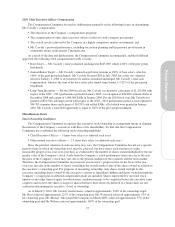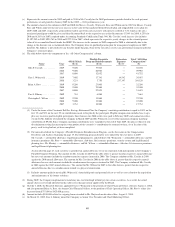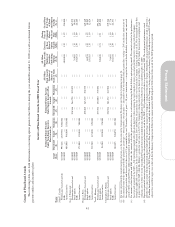Cincinnati Bell 2009 Annual Report Download - page 52
Download and view the complete annual report
Please find page 52 of the 2009 Cincinnati Bell annual report below. You can navigate through the pages in the report by either clicking on the pages listed below, or by using the keyword search tool below to find specific information within the annual report.Employment Agreements and Severance and Change-in-Control Payments and Benefits
The Company generally enters into employment agreements with the named executive officers for several
reasons. Employment agreements give the Company the flexibility to make changes in key executive positions
with or without a showing of cause, if terminating the executive is determined by the Company or the Board to
be in the best interests of the Company. The agreements also minimize the potential for litigation by establishing
separation terms in advance and requiring that any dispute be resolved through an arbitration process. The
severance and change-in-control payments and benefits provided under the employment agreements and
described in more detail beginning on page 51 were important to ensure the retention of Mr. Cassidy and other
named executive officers at the time they were promoted to their present positions and are important to their
continued retention. The payments and benefits are comparable to the payments and benefits to which the
executives’ predecessors in office were entitled and to the payments and benefits provided by other companies to
employees in similar positions. The Company considers the employment agreements to be especially important
in situations involving a possible change in control because they provide the executives with sufficient
compensation and clarity of terms in such a situation. Thus, the executives are able to devote their full attention
to fairly evaluate the potential transaction and its benefit to the Company and its shareholders rather than being
distracted by the transaction’s possible effect on their personal employment situations. Because these potential
payments are triggered under very specific circumstances, such payments are not considered in setting pay for
other elements of executive compensation.
Adjustments and Recovery of Award Payments
The Company is subject to the requirements of Section 304 of the Sarbanes Oxley Act. Therefore, if the
Company were required to restate its financial results due to any material noncompliance of the Company, as a
result of misconduct, with any financial reporting requirement under the securities laws, the Securities and
Exchange Commission could act to recover from the Chief Executive Officer and Chief Financial Officer any
bonus or other incentive-based or equity-based compensation received during the 12-month period following the
date the applicable financial statements were issued and any profits from any sale of securities of the Company
during that 12-month period.
Compensation Limitation
Section 162(m) of the Internal Revenue Code generally limits to $1,000,000 the available deduction to the
Company for compensation paid to any of the Company’s named executive officers, except for performance-
based compensation that meets certain technical requirements. Although the Compensation Committee considers
the anticipated tax treatment to the Company of its compensation payments, the Compensation Committee has
determined that it will not necessarily seek to limit executive compensation to that deductible under
Section 162(m) of the Internal Revenue Code.
38



